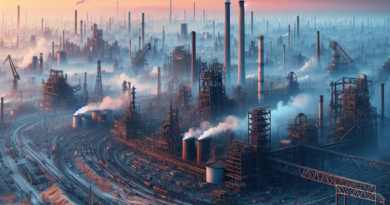Ukrainian Strategy to Counter Russian Oil Attack
Ukraine Targets Russian Oil Refineries: Escalation of Conflict
The tensions between Ukraine and Russia have escalated with Ukraine’s strategy targeting oil refineries in Russia.
Just a few weeks ago, Money.it reported on this new phase of the conflict, with the energy facilities of both countries becoming prime targets.
On Saturday, April 27, Kiev launched drone attacks on the oil refineries in Ilsky and Slavyansk in the Russian region of Krasnodar, causing fires in the structures, as reported by foreign sources.
Conversely, among the recent targets hit by Kremlin forces were energy plants in the Lviv and Ivano-Frankivsk regions in the west, and in the Dnipropetrovsk region in central Ukraine, according to Ukrenergo, the operator of the national grid.
Impact on Energy Infrastructure
State-owned Naftogaz stated that gas infrastructure had been targeted, but services to Ukrainian customers remain uninterrupted.
In the already complex framework of the Ukrainian war, these strategic attacks on oil and gas facilities pose significant dangers.
Notably, President Biden expressed disappointment in Ukraine’s tactics.
With the Russian invasion now in its third year, Ukraine has intensified its attacks on Russian oil and energy facilities using long-range drones.
Despite foreign allies’ appeals to halt this strategy to avoid Russian retaliation and global oil price hikes, Kiev considers the oil refineries legitimate targets.
Drone Attacks and Consequences
Local Russian authorities reported that the oil refinery in the Krasnodar region halted operations after the drone strikes.
Roman Siniagovskyi, head of the Slavjansk administrative district, mentioned the attacks on key refining equipment.
Observers suggest that Ukraine aims to reduce Moscow’s oil revenues funding the war; hence, Russian crude export ports may become future targets.
Recent reports indicate that long-range drones have hit at least 20 energy facilities in Russia this year, causing concerns for global energy markets and inflation.
The US administration warned Ukraine of the impacts on global energy markets and urged a shift towards military targets.
Geopolitical Risks and Economic Implications
The fear of increased energy costs contributing to inflation and potential stagflation in the US is real.
Rising Brent prices, driven by higher war risk premiums, are nearing $90 per barrel, while gasoline prices are approaching the politically sensitive $4 mark in the US.
The US cautioned Ukraine on targeting Russian crude oil facilities, highlighting the potential threats to global oil production, exports, inflation, and geopolitical tensions.
The interconnected nature of these conflicts underscores the precarious situation in the oil market.




